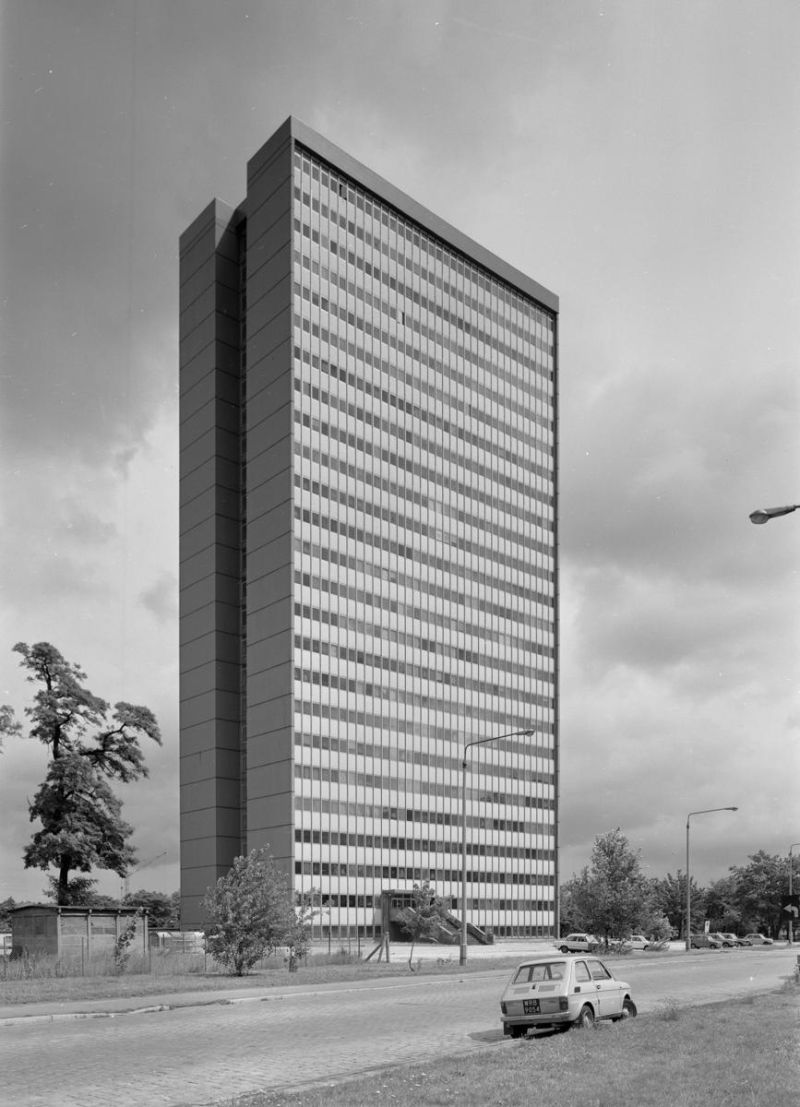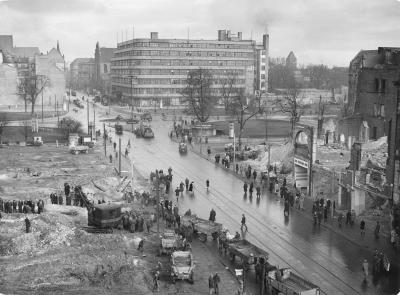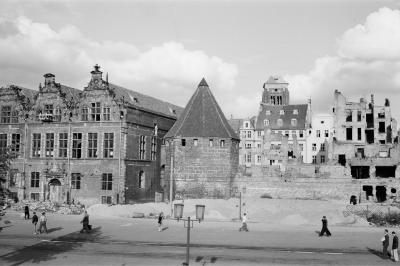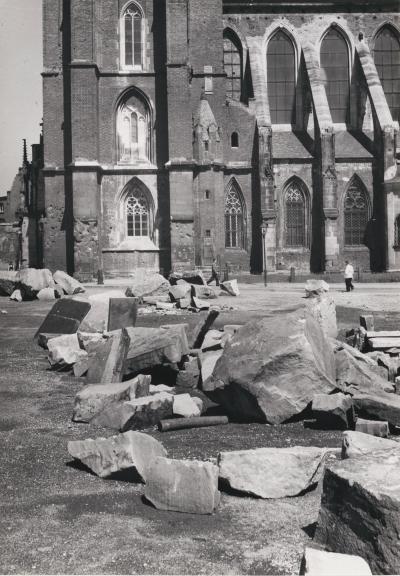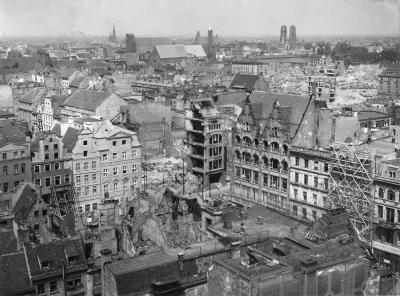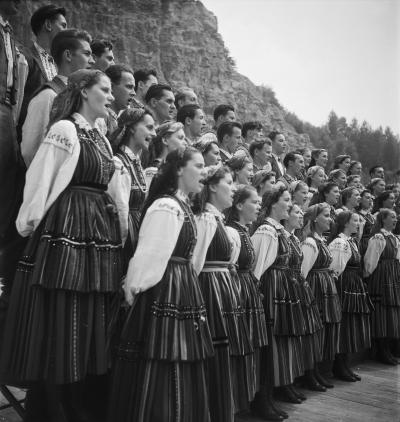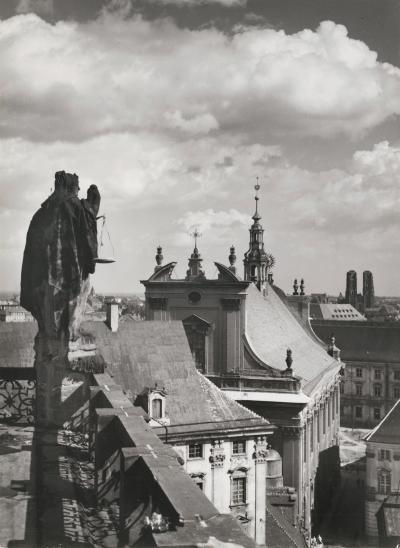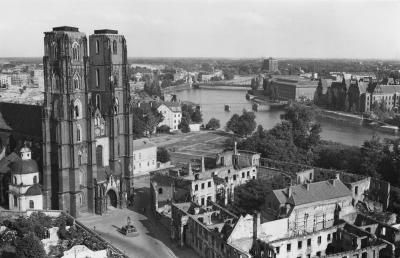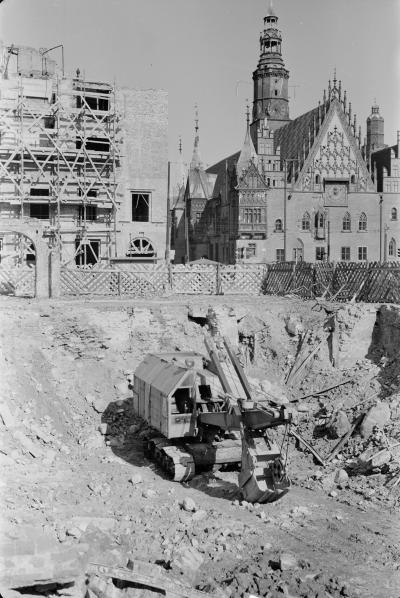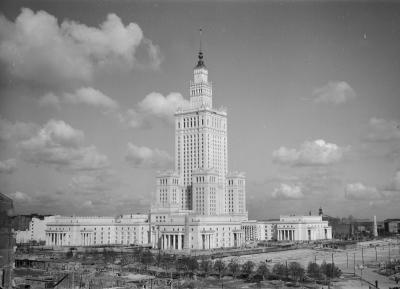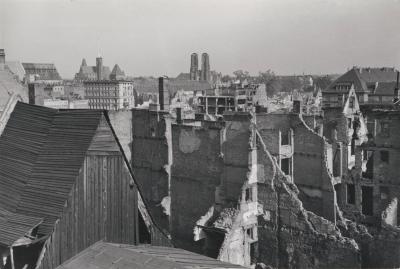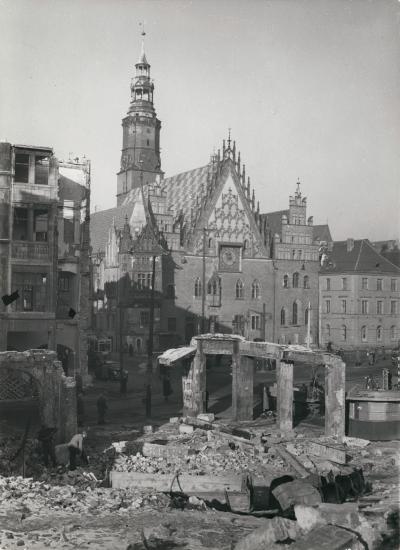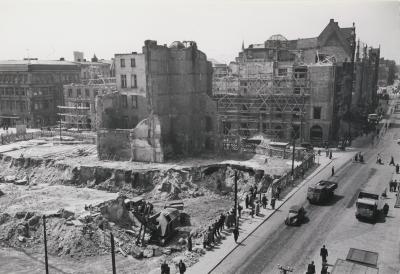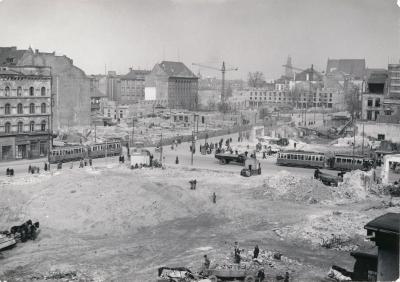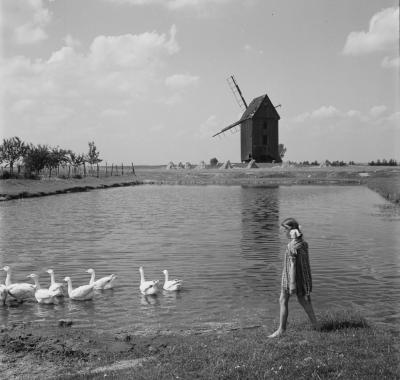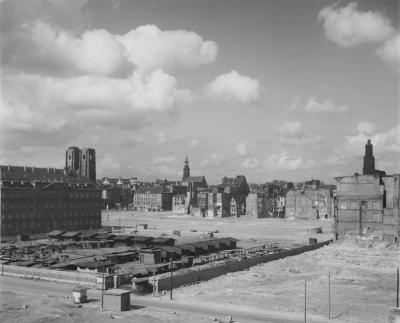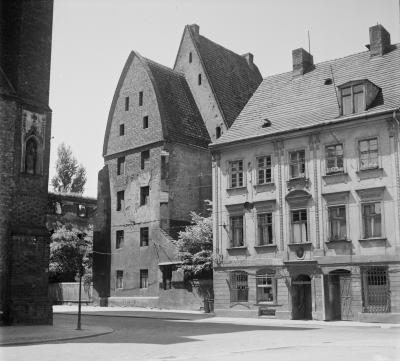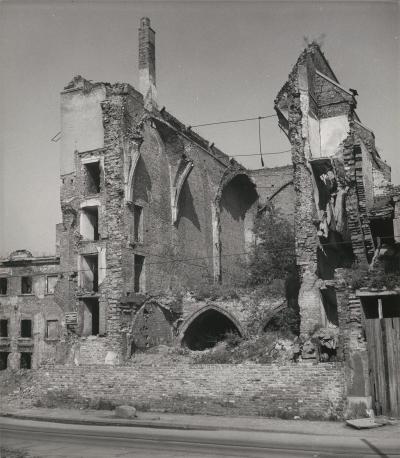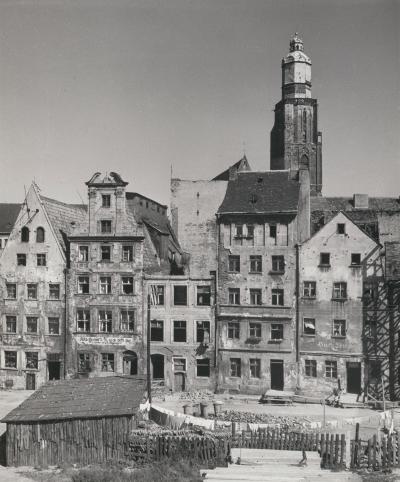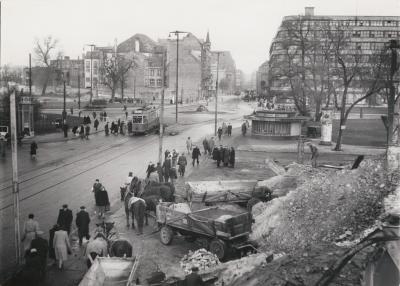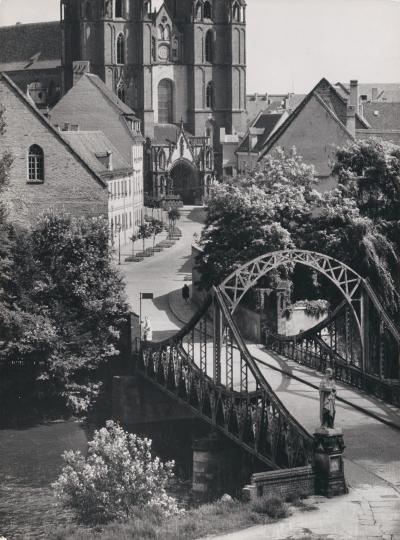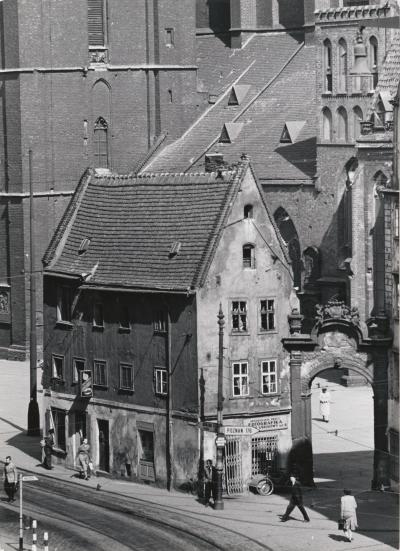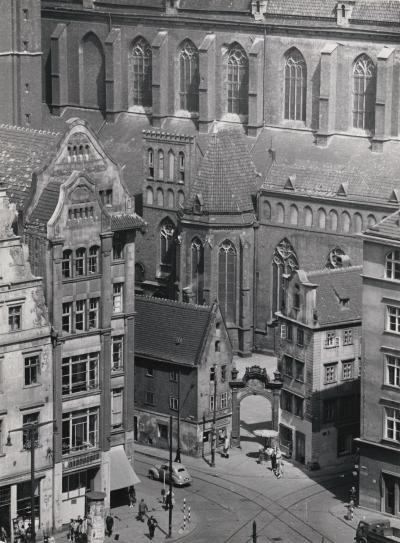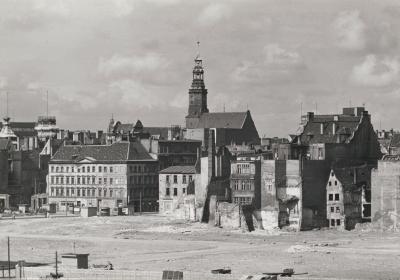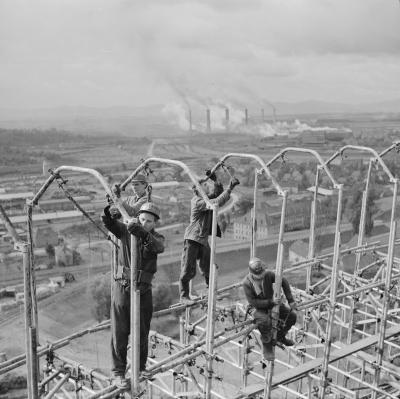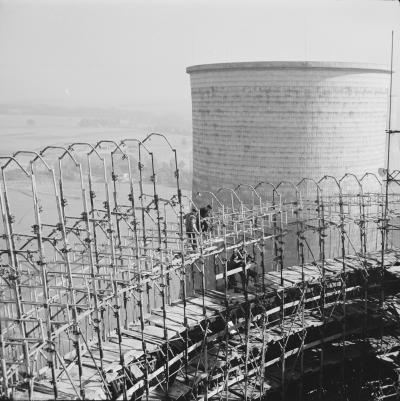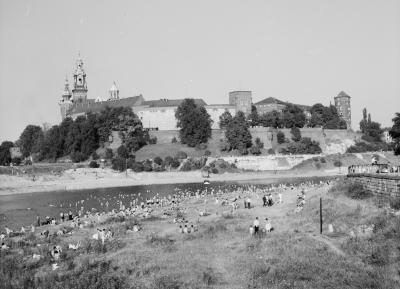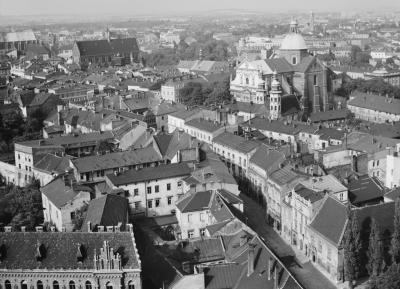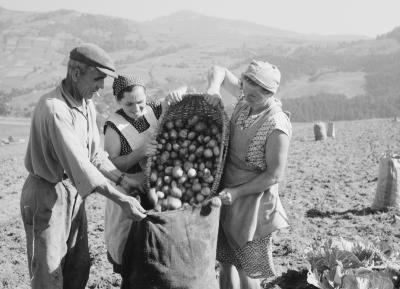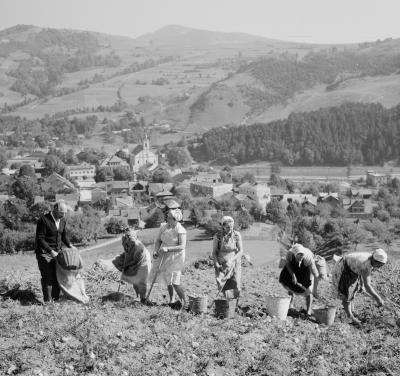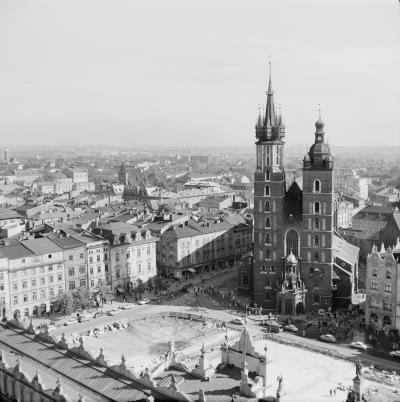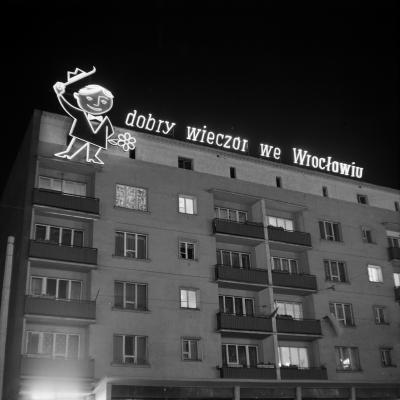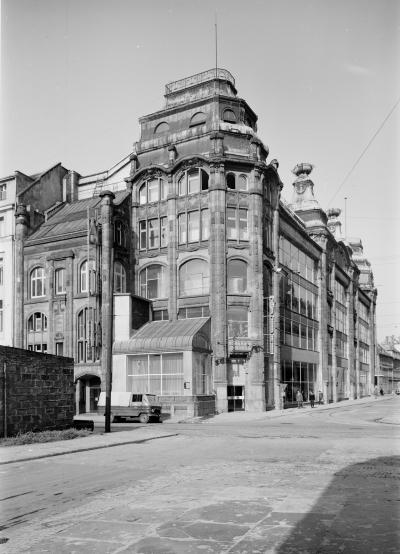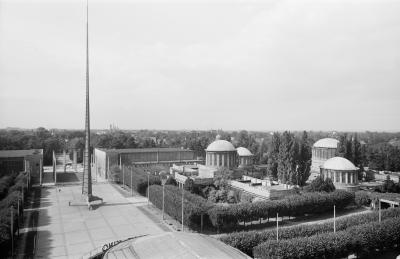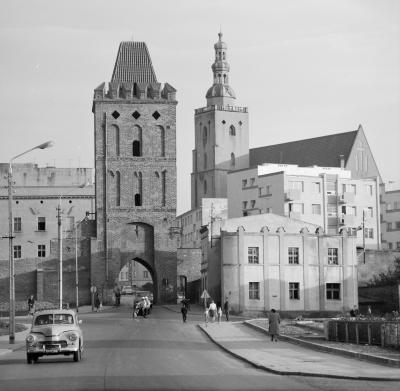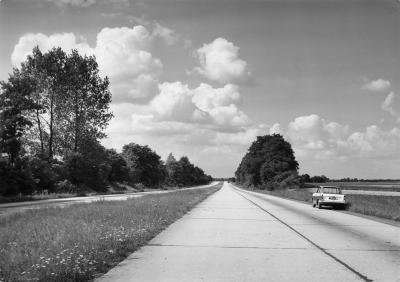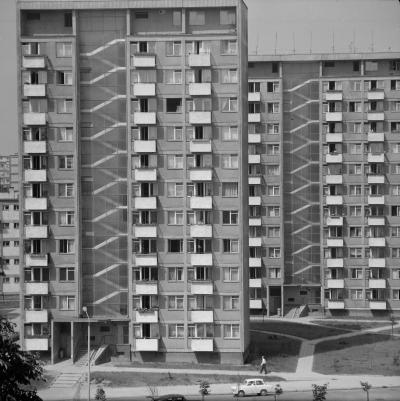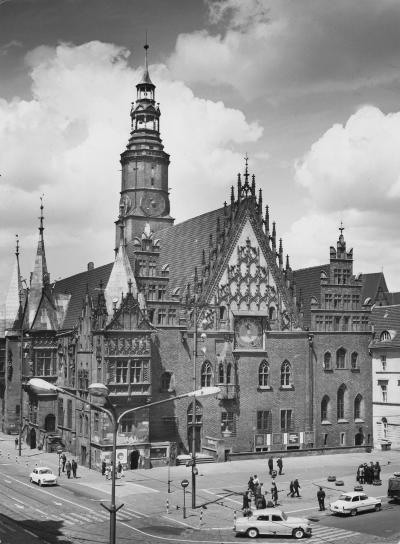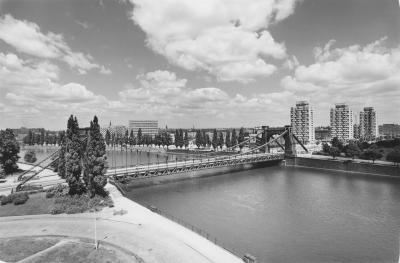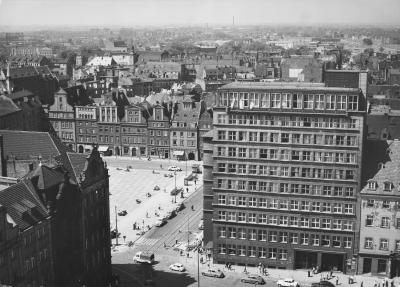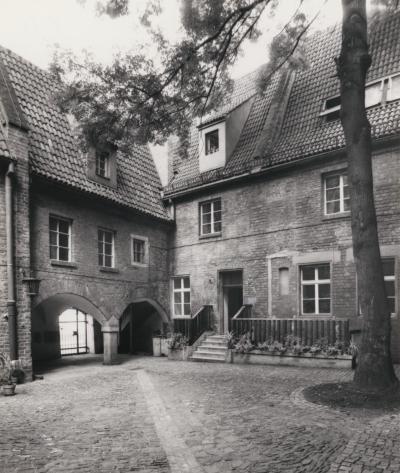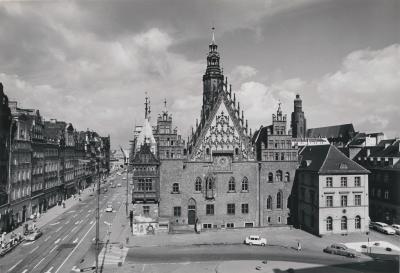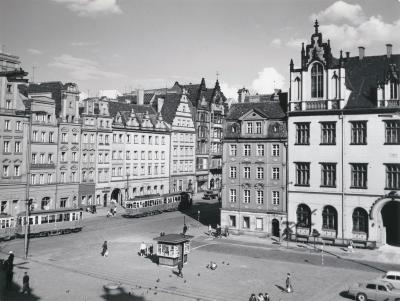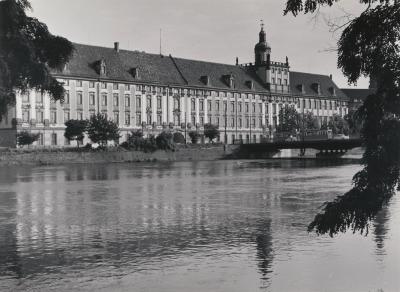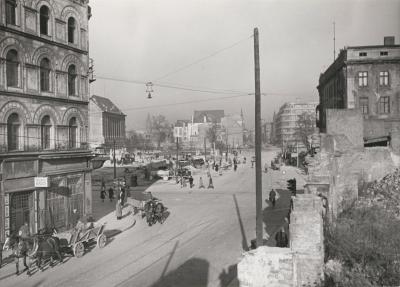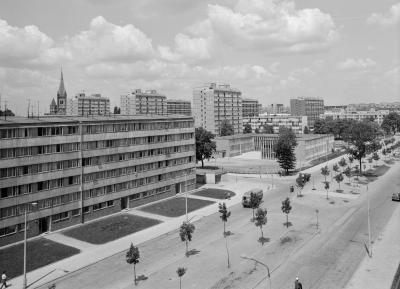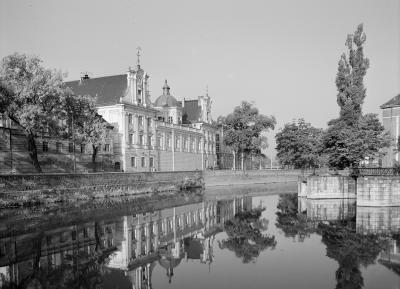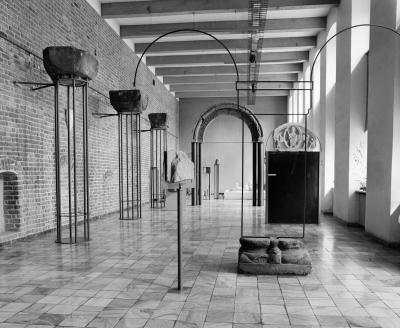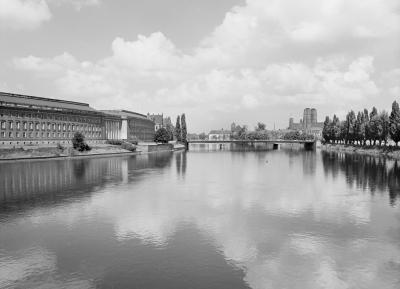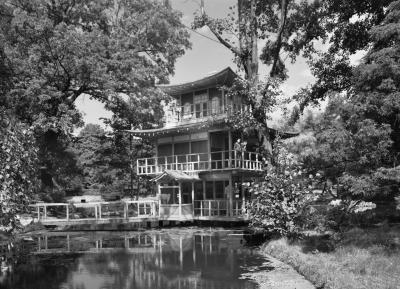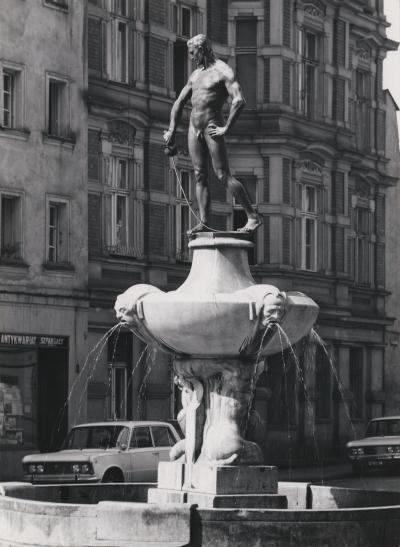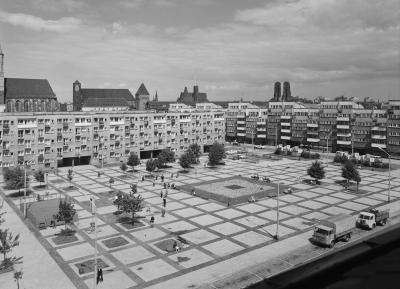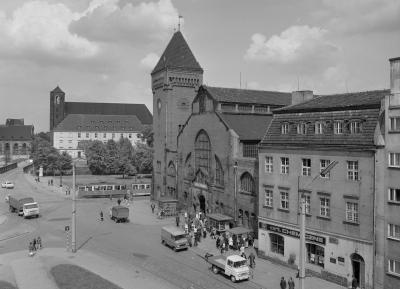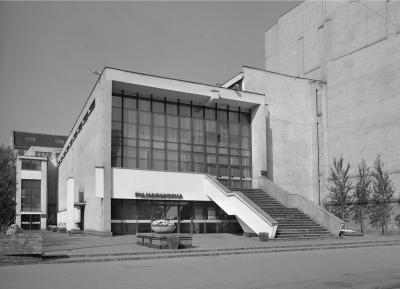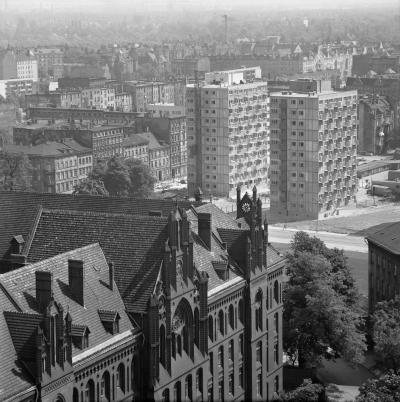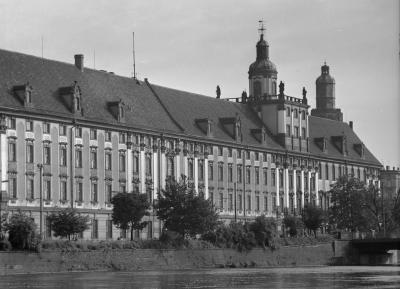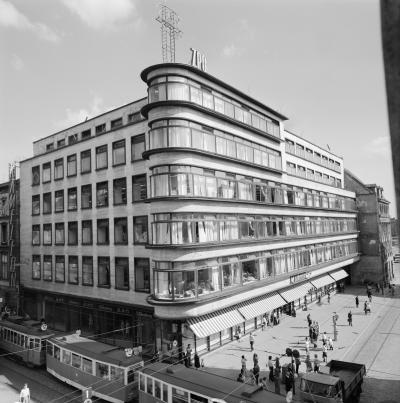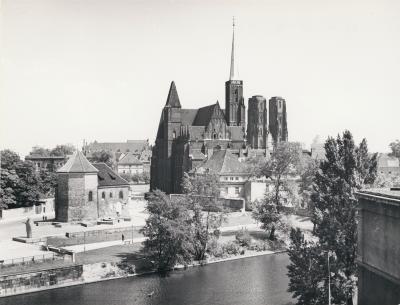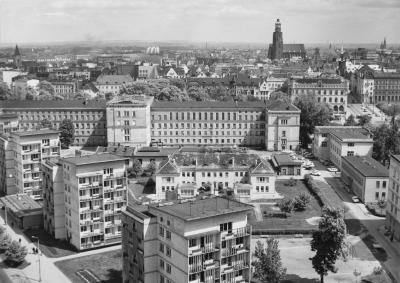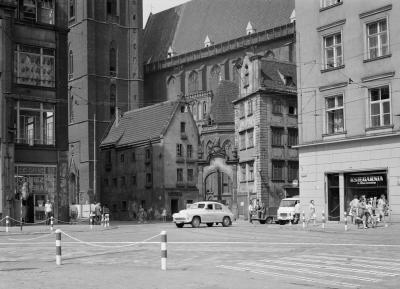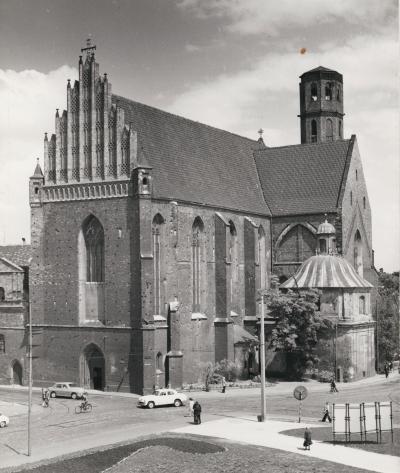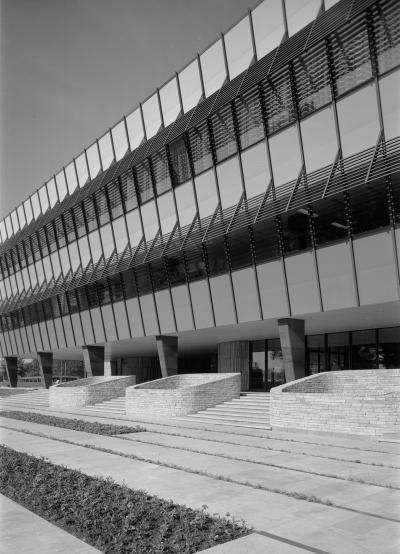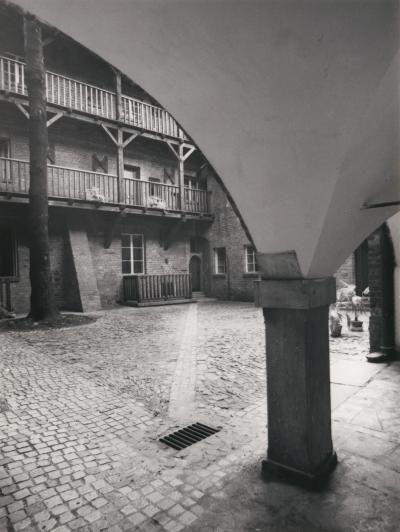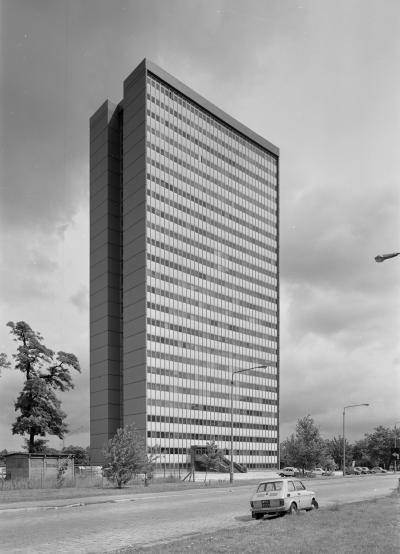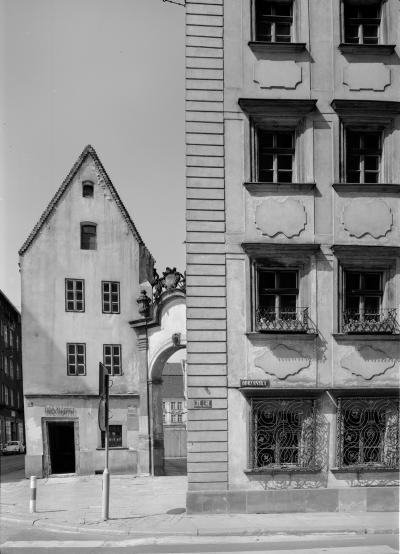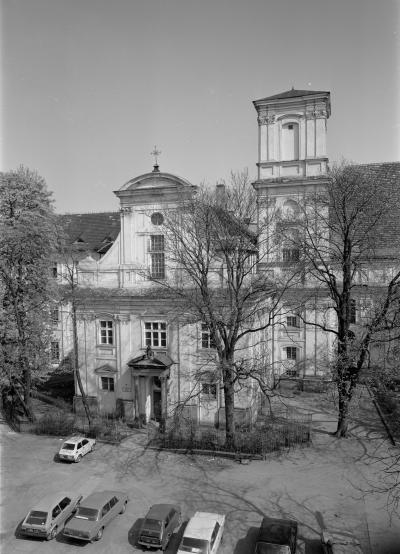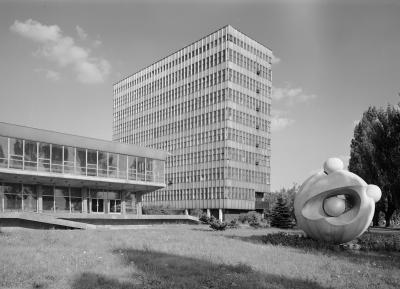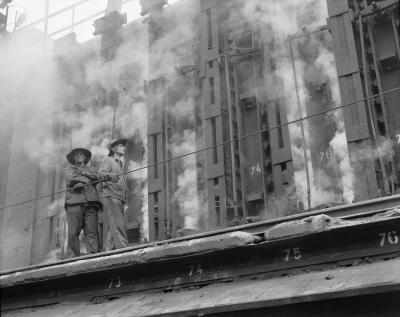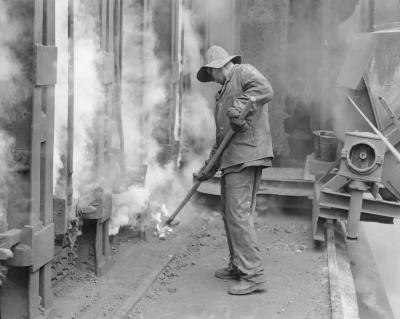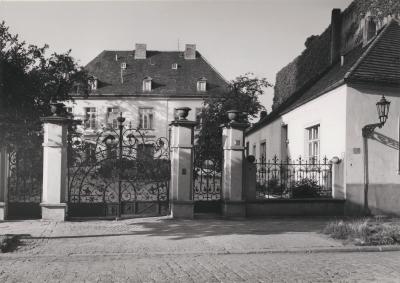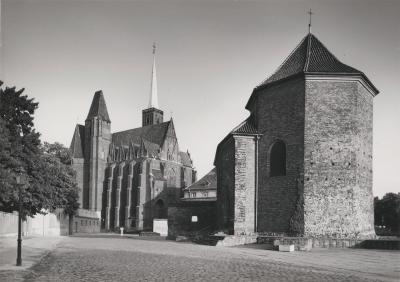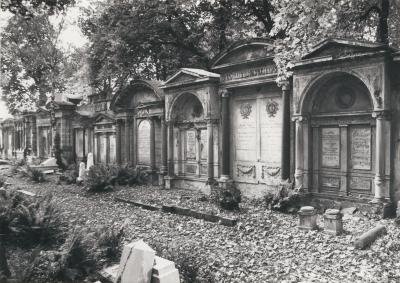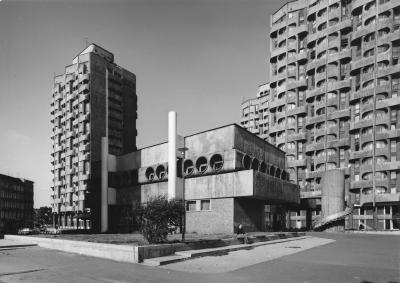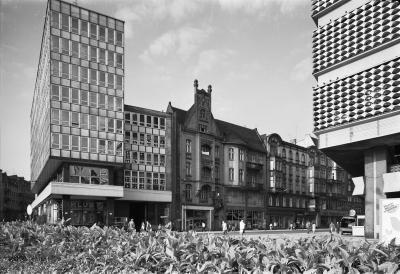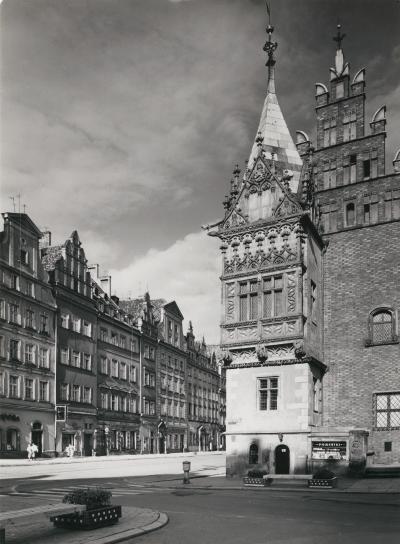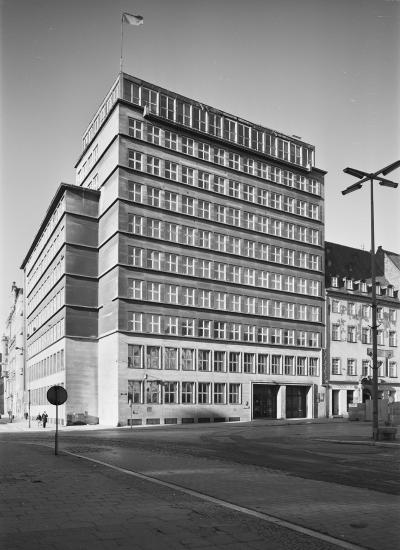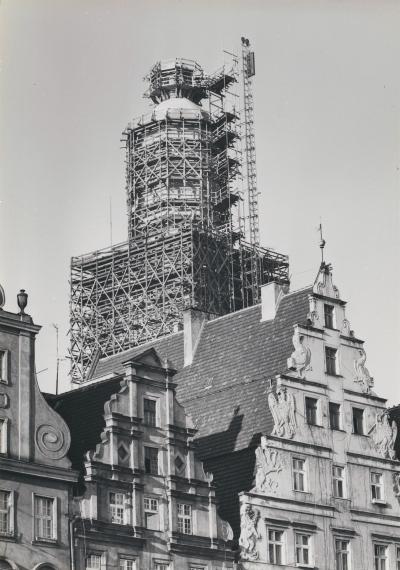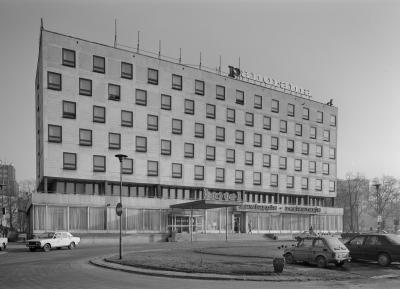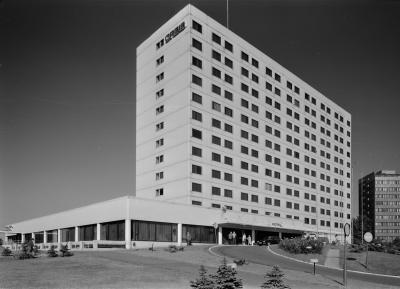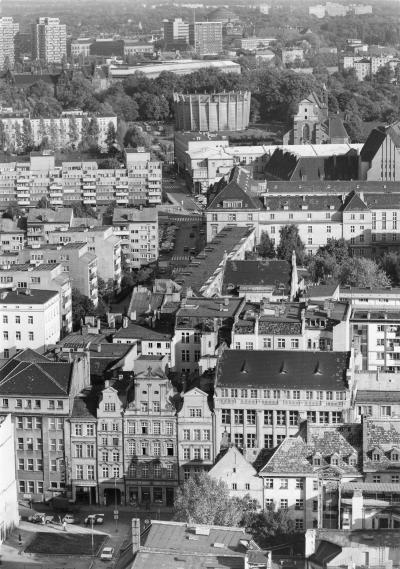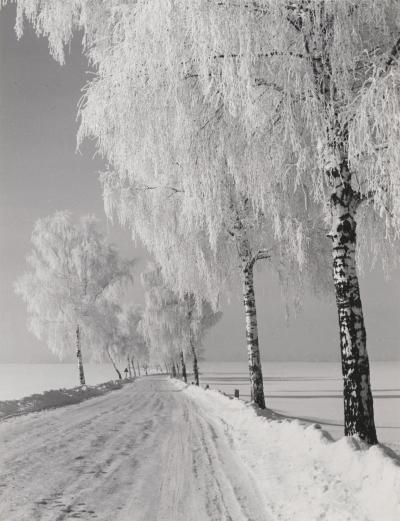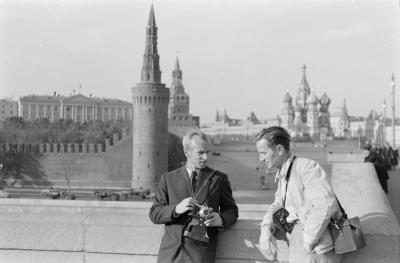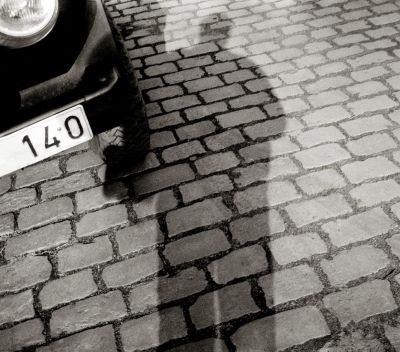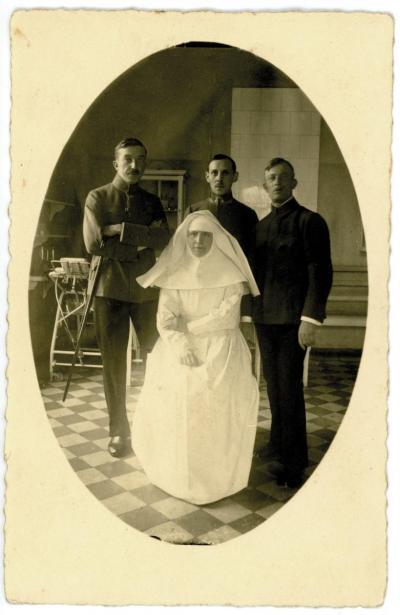Stefan Arczyński: A master of photography spanning two cultures
Mediathek Sorted

His time in Germany
Stefan Arczyński was born in Essen on 31 July 1916 as the third child of Wiktor Arczyński (1879-1940) and Helena (1889-1918), née Adamska. The family hailed from what was at the time the German province of Poznań and shared the same fate as thousands of Poles who, around the turn of the 20th century, emigrated from the rural part of the region annexed by Prussia to the industrial areas of West Germany, to the Rhineland and to Westphalia to look for work.
Stefan’s father was originally from Solec Kujawski. Around 1900, he found a job in the administration department of the Krupp steelworks in Essen. His mother came from Mogilno in Greater Poland. In a photo taken in Gniezno in 1907, we can see a young woman in a fashionable white dress with a boa around her shoulders. Her pretty, round face is animated by a slight smile. Wiktor and Helena are married in 1908. Their children Tadeusz and Helena are born shortly afterwards. The Arczyńskis held firm to their Polish heritage, Polish traditions and Polish language and kept in touch with their family that had remained in the East. Wiktor was involved in various Polish organisations and after the First World War was also active in the Union of Poles in Germany.
Following the premature death of the mother, who passed away only two years after the birth of her youngest son Stefan, the father was left to bring up the children. A photo from this time, taken in Essen in 1919, shows him with his children. The family is in festive dress and gathered around a small round table. The father in a dark suit has his arm around the small, long-haired Stefan whose two older siblings are standing on the other side of the little table. They all seem relaxed as they look into the lens, the children are smiling a little. To maintain their ties with their home country, the father regularly sends the young Arczyńskis to their family in Poland during the holidays. Stefan’s brother did his A-levels in Poland although he went through the school system in Germany. He then studied at the Politechnika Gdańska (Gdansk Technical University), took on Polish citizenship and moved to Upper Silesia to work as a chemist.
Stefan Arczyński discovers his love for photography in his youth. His first photographs were taken in the 1930s and he was predominantly interested in urban architecture and sport. When he attended sporting competitions and games, his camera was always with him. In 1934, after finishing secondary school, he trained in a photographic studio in his home town of Essen, where, over the next three years, he learnt the basics of the trade. During this time, he worked as a wedding photographer taking portraits and group pictures. But because he wasn’t interested in using his camera to just capture the life stages of middle-class families, he worked on refining his own style.
At this time, photography in Germany was already very popular and as such was also well developed, although the influence of modern art movements in 1933 had been significantly restricted. However, the young Arczyński was certainly influenced by role models, such as Erich Salomon, Karl Blossfeld and August Sander. But the young man was trying to find his own language in photography by combining the aesthetic of the “new reality” (influenced by Bauhaus, by the Deutscher Werkbund (German Association of Craftsmen) and others) with a certain amount of admiration for the gigantism of many themes.
He was soon able to put his abilities to good use when he photographed the eleventh summer Olympic Games in Berlin in August 1936. One of these pictures shows Helen Stephens, who, at that time, was the fastest runner in the world. From this moment on, portraits become a favourite means of expression for him.
The challenges of war
In 1938, Arczyński as a citizen of the German Reich, is called up for compulsory labour service and then, when the Second World War breaks out, he is conscripted to the German military where he first serves in the air force and later in the infantry. His profession as a photographer saved him from being assigned to the units that invaded Poland. His brother Tadeusz, on the other hand, was involved in the invasion of Poland and fought as an officer in the Polish Army.
During all this, the Arczyński siblings were beset by great tragedy. Following the outbreak of war, mass arrests of members of Polish organisations in Germany were made. Most of the prisoners were deported to camps where some of them lost their lives. This was also the fate of their father, Wiktor Arczyński, who was arrested and sentenced to death for “friendliness to Poles” along with other Krupp employees who, like him, were members of the Union of Poles in Germany. He was executed in Berlin in 1940. Stefan Arczyński was also held for a few weeks in the Berlin-Moabit and Berlin-Plötzensee prisons and confronted with his father until he was eventually released and seconded to his unit in the air force.
This regiment, in which Arczyński developed and saved aerial photographs, was involved in the French campaign. Later, he was sent to the Eastern front where he was took part in the assault on the Soviet Union and was involved in the battles for Stalingrad. He always had his camera with him at the front. In January 1942, he was wounded and given medical treatment in Artjomowsk which saved him from death in the Stalingrad Cauldron. After his discharge from hospital, he was sent back to the front. In the military convalescence hospitals in Kłodzko Land, Kłodzko and Międzygórze, he gradually regained his strength. Once he was back on his feet, he was again sent back to his air force unit at the eastern front which, at this time, was stationed in the Baltic Region. He passed the end of the war in Latvia, where he ended up a prisoner of the Russians. In Latvia he had a number of jobs, including working in a matchstick factory, a brewery and a sawmill. He was very fortunate that he was not deported to deepest Russia.
After several months in captivity, the Russians handed him over to the Polish authorities. The reasons given for his release were his Polish heritage and the tragic fate of his father, an official in the Union of Poles in Germany. He was placed in the transit camp in Sieraków near Poznań.
The fate of his brother Tadeusz after the war was quite different. After the Soviet invasion of Poland, he ended up in Latvia where he was settled after the Russian annexation of the Republic and taken to a labour camp in Siberia. He finally left the USSR with the Anders-Armee, named after the Polish general Władysław Anders, and was then involved in battles in Italy, including near Monte Cassino. After the war, he did not return to Poland but remained abroad, finally settling in California in the United States.
Professional beginnings in liberated Poland
After his release from the transit camp and a short stay with his family in Solec Kujawski, Stefan travelled to Lower Silesia. Whilst there, he stayed in Lubawka, a town in the Sudetes, where his sister already lived with her family who had arrived there with other Poles from Berlin. (Little is known about this aspect of Stefan Arczyński’s biography and it requires research). Shortly afterwards, he was awarded Polish citizenship. He has the authorities in Kamienna Góra to thank for the fact that he was able to open a photography studio there.
Two years later, Stefan Arczyński moved to Wrocław where he ran his photography studio at 2 Łokietka Street for many years. He was also an active member of Wrocławskie Towarzystwo Fotograficzne (Wroclaw Photographic Society), where he gave lessons in photography. In 1951, he became a member of the Związek Polskich Artystów Fotografików (Association of Polish Art Photographers), whose art committee he was member of for 15 years.
In the years that followed, he documented the social life of Wrocław and of Lower Silesia, including monuments and landscapes amongst his motifs. Anything worth pointing out, he captured with a matter-of-factness and professional detachment. He did not follow the trend at the time of politicising the medium of photography, but instead remained faithful to the techniques that he had learnt in Germany in the 1930s. His pictures are prepared in detail and are technically perfect.
Arczyński interest was rooted in the manifestations of social and cultural life. Many of his cityscapes and his pictures of historical buildings are well known, so that it would be true to say that his photographs brought recognition to the virtually unknown region, which returned to Poland in 1945. His focus on the details was meticulous and done with the care afforded by a documentalist. He particularly gave his attention to the town of Wrocław. Today, his images of this metropolis on the Oder, taken at various periods in time, are a valuable testimony to the enormous change the town has undergone since 1945.
Preserving the town’s most important architectural monuments, such as its churches, secular buildings and functional buildings, in photographs was a challenge. The fact that he mastered this challenge in such an exemplary manner was remarked upon by the acknowledged expert in Polish photography Adam Sobota:
“What really distinguished him was his ability to combine the soundness of his craft with the aesthetic of the modern, which at that time was rarely used, and this manifests itself in the full use of grey scale in the dynamic juxtaposition of shapes and surfaces. This type of photography closed the gap between avant-garde and pictorialist photography.[1]
Arczyński specialised in challenging and sophisticated photographs of scenes from the theatre and opera. He followed the work of Wrocławski Teatr Pantomimy Henryka Tomaszewskiego (Wroclaw Henryk Tomaszewski Pantomime Theatre) for many years by photographing performances, going on foreign tours with the theatre and taking portraits of the artists in his atelier.
In 1952, he met the woman who would later become his wife, the ballet soloist Lidia Cichocka, who he was supposed to take a portrait of for a poster and who was often an inspiration for his pictures. He travelled around the world a lot. In 1960, he visited the US, where he met his brother after many years of separation. His complete works include images from all the regions of the world, especially from Europe, China, India, Africa and the US.
Hundreds of pictures have come together over the years to create a number of series, which the photographer showed with great success in exhibitions, both at home and abroad. His pictures appeared in publications from various publishing houses, including Ossolineum, Arkady, Sport i Turystyka, Ruch and in the last few years in Via Nowa as well. Arczyński was also the creator of images printed on the covers of many magazines and used as the motif for picture postcards. His artistic achievements were honoured with various diplomas and medals. He became the only recipient in the history of the prize bestowed by the town of Wrocław (Nagroda Miasta Wrocławia) to win the award twice (1959, 2000). Arczyński was nominated on several occasions for honorary citizenship of the town and was awarded the renowned Silesian Culture Award (Śląska Nagroda Kulturalna, 1992). The Polish Minister for Culture and National Heritage also awarded him the Gloria Artis medal for services to culture twice (Medal Zasłużony Kulturze Gloria Artis): 2006 in silver and 2011 in gold.
Arczyński, who experienced many dramatic events of the 20th century during his long lifetime, always remained a person spanning two cultures. He never denied his relationships to Germany and to the Germans. He worked repeatedly as a photographer for German publishing houses and, because he understood the sensitivities and expectations of the Germans, he enjoyed great popularity. A few years ago, the historian Michał Kaczmarek wrote quite an accurate account of his ties to Germany:
“Like no other Polish artist, he, who knows the soul of the German reader, who once left his country, empathises perfectly in his psyche, reads his dreams and his longing for the lost kingdom of childhood. But at the same time he brings everything to the fore that is universal and timeless and resistant to political change. His clear and consistent approach places him today amongst a group of artists that worked on rapprochement between the two neighbouring countries their whole life without embroiling themselves in politics, without unnecessary words and without pompous slogans.”[2]
Krzysztof Ruchniewicz, May 2019

















































































